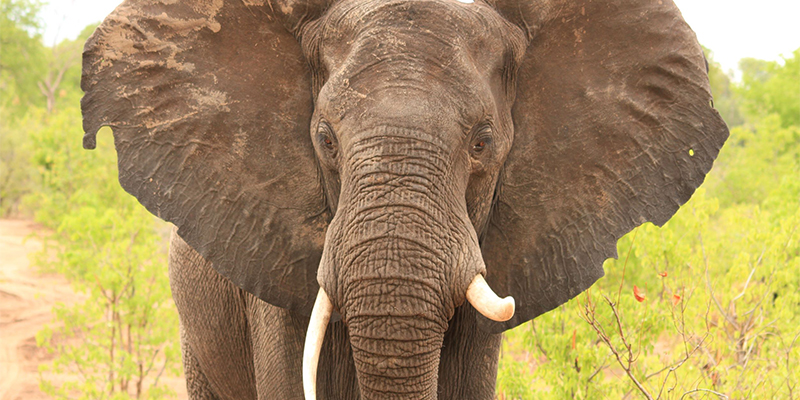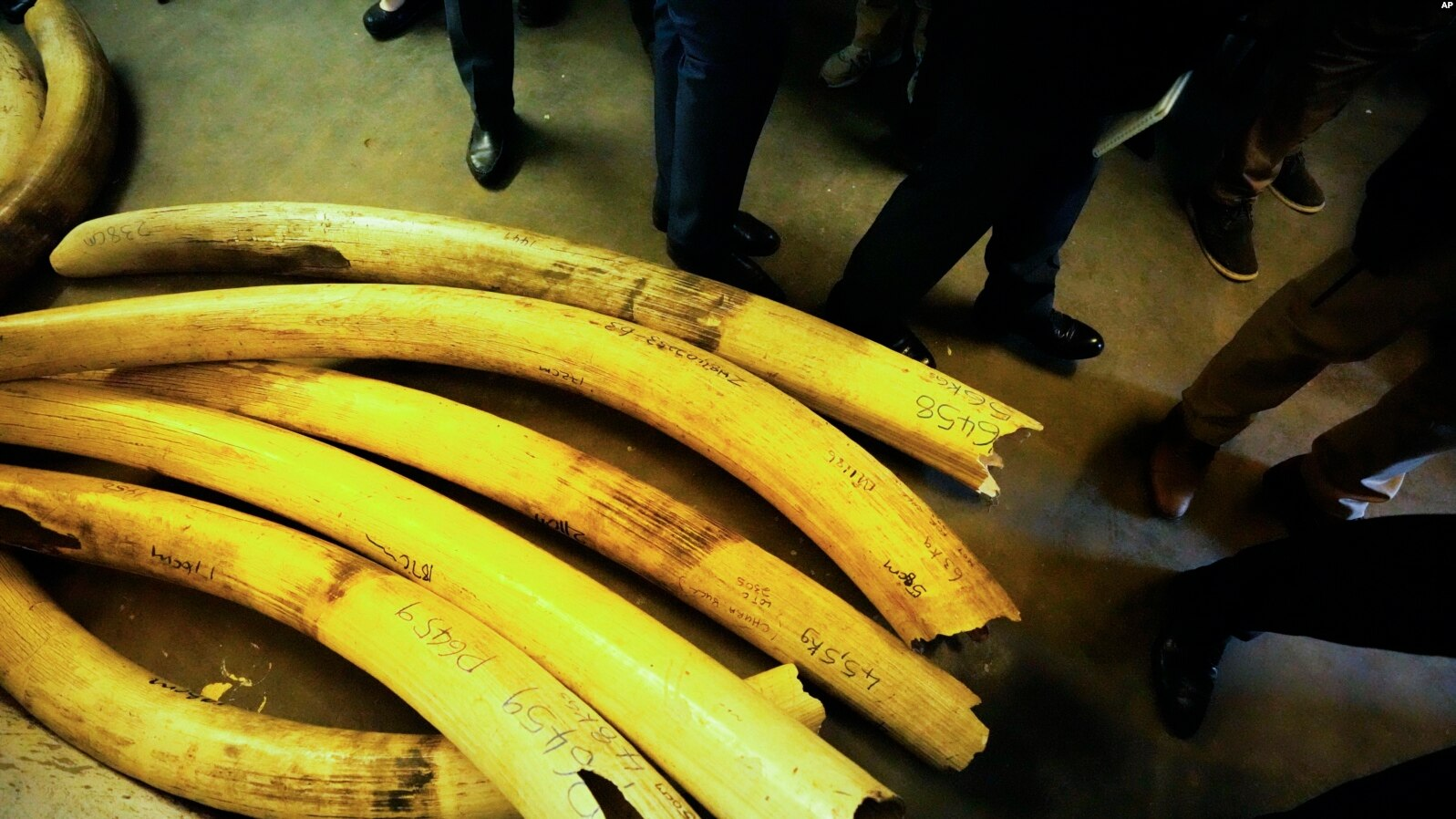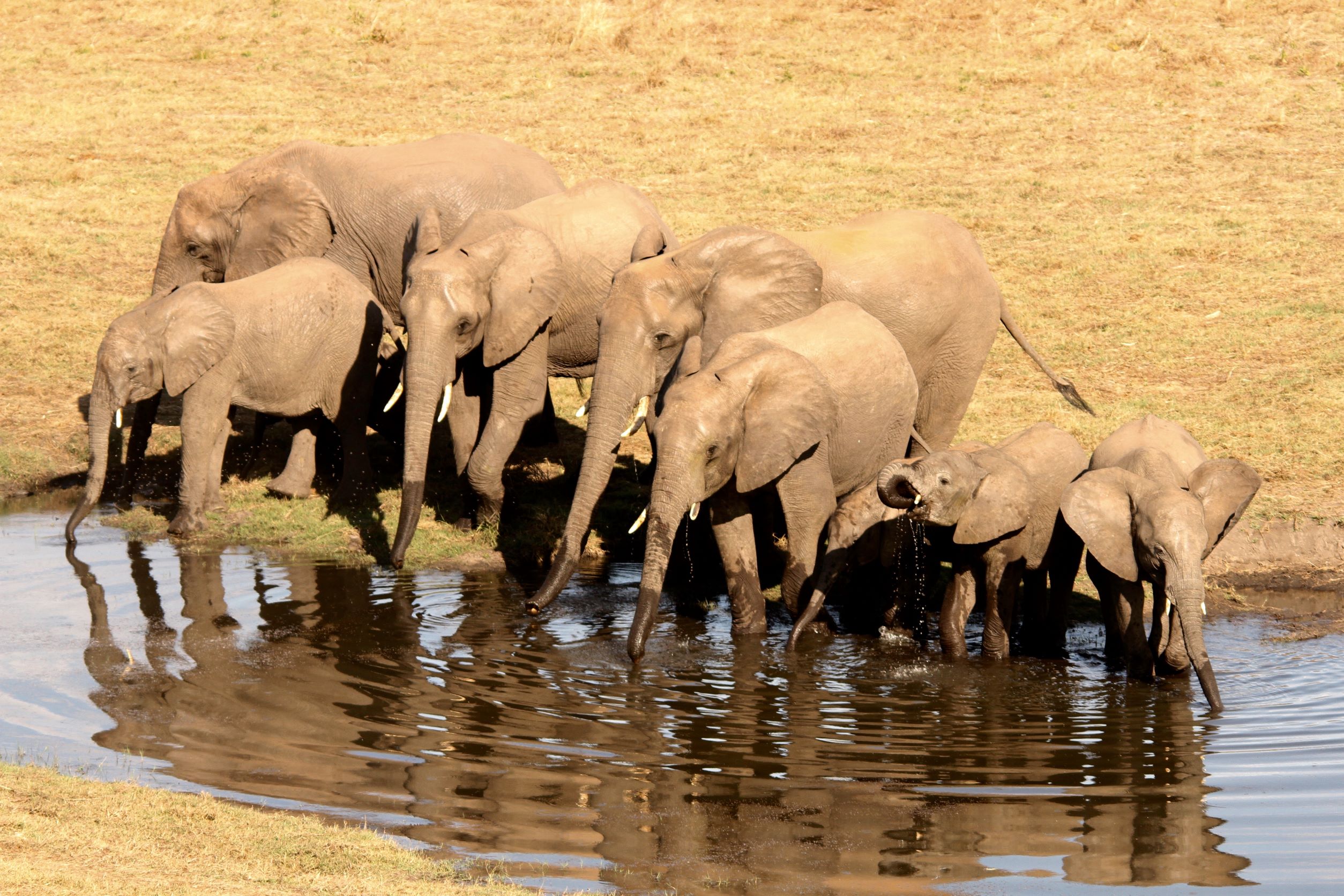Can we talk about ivory? Moving beyond binary trade arguments for elephant conservation
LCAB PhD student Molly Brown considers the complexity of African elephant conservation which is dominated by the ivory trade ban debate in the mainstream understanding of elephant conservation.

Demand for ivory is a key driver of the current endangered status of African elephants, so it may seem obvious that a complete ban on trade is the best solution. In reality, however, the arguments are complex and divisive, with one side arguing that trade based on ivory stock could fund conservation, and others arguing that any trade leads to more conflict. But perhaps by looking beyond binary arguments, new solutions can be sought using evidence-based conservation approaches for better elephant conservation outcomes.
Through LCAB’s artist residencies, I hope to bring attention to the complexities of ivory trade arguments that are often ignored in the UK media by collaborating with British-born Zambian playwright May Sumbwanyambe on a BBC Radio4 drama. Our play will illuminate how much more can be done to support successful elephant conservation beyond arguing for and against buying and selling ivory. This dramatic deep dive will also bring necessary light to the expert African voices often underrepresented in the UK about the harsh realities faced across African elephant range states when it comes to conserving the iconic African megafauna.
Ivory trade bans
In 1989 the international trade in ivory was banned following a rise in elephant poaching in the mid-20th century. Since then, national domestic ivory bans have been implemented around the world with the most influential of those promulgated in China in late 2017, following an African elephant poaching peak caused by a rise in Chinese consumer demand for ivory in the early 2010s. The UK’s own 2008 Ivory Act is one of the most recent, banning most domestic ivory sales since June 2022. These trade bans are perceived as key components of global elephant conservation strategies, focussing on reducing the demand for ivory, alongside improving supply-side law enforcement and policy regulation. However, these bans are not universally supported and opposition to them originates primarily from Southern African countries hosting some of the world’s largest elephant populations.
“If elephants are still being poached, why is there any support for the ivory trade?”
The question posed above replicates the sentiment held by much of the UK general public towards the ivory trade. This highlights a critically important element of African wildlife conservation more broadly: the national sovereignty of African countries to make decisions over their natural resources. Inherently, the question does not consider the validity of the rationale behind why African governments may support the ivory trade, nor other nations such as China and Japan where ivory carving, for example, is a deeply revered skill of intangible cultural value. The question also assumes that Africa is homogenous and elephant conservation and impacts of the ivory trade are equal across elephant range states. This is an oversimplification of the complexities of elephant conservation practices and population dynamics which can vary greatly within a region. To appreciate these complexities, African nations, their expert scientific communities and local communities need to be the leading voices in their wildlife conservation management in order for policy and practice to resonate with their people for long-term success.
Since the colonial era, the UK and other Western nations have heavily dictated African conservation practices. Western activism and political pressure continue to heavily shape how African nations can manage their natural resources. For elephants, this is intimately tied to ivory. Without an international marketplace to sell ivory, African nations with ivory stocks are unable to benefit from a natural resource they have sustainable access to in the form of ivory harvested from the natural mortality of elephants. In 1999 and 2008, ivory sales were permitted by the Convention on International Trade in Endangered Species of Wild Fauna and Flora (CITES) for a select few southern African countries to sell to Japan and China. These experimental and one-off sales, arguably triggered an increase in elephant poaching, reaching a peak around 2012 as the East Asian demand for ivory gained momentum. Since the 2008 sale, despite the continuous fight for sales by Southern African governments, CITES has not permitted further international trade. A recent attempt by Zimbabwe to unite African nations on their stance toward the ivory trade in May 2022 was unsuccessful, emboldening other CITES nations in their support for continuing the complete ivory trade ban. However, countries such as Zimbabwe, Zambia and Botswana argue strongly that they should be free to sell their ivory stocks.

Ivory stockpiles in Harare, Zimbabwe May 2022. Image credit: VOANews/Associated Press
In part, supporting arguments for resuming trade rest upon the use of the revenue generated from sales to fund conservation activities and support the local communities who experience the very real costs of living alongside elephants. Zimbabwe and Botswana host the largest elephant populations in the world and argue that ivory sales are the only financially viable option to support their evidenced successful conservation models in the wake of the COVID-19 pandemic’s devastating effects on tourism revenues. Again, this argument is reasonable and merits serious consideration by the international community. Due to the concern of corruption in the chain of conservation revenue generation, based on the previous failure of ivory sales to evidence community financial and social support, more transparent financial mechanisms that are independently evaluated would need to be integrated into any new sales procedures.
No matter how much elephants are revered in the West, we do not have to live with them, bear the costs inflicted by their crop-raiding, or consider the fatal risk of encountering them that some rural African communities must face. In African countries where poverty cripples some rural communities, where corruption can be rife in government departments, and tourism economies are still bleeding from COVID-19 repercussions - the argument for utilising ivory stock for financial cash flow is understandable, particularly when it could be fed back to support conservation initiatives. These arguments are rarely heard in the West, and more importantly, little support in terms of finding alternative viable solutions is offered when such arguments are posed. Progressive conservation approaches that would enable Indigenous and local communities to benefit from their national and local wildlife, whilst being well-managed to reduce conflict, is of paramount importance if we are to find solutions to move beyond the trade debate. International trade in ivory is unlikely to be possible anytime soon, given the closure of major markets and the global growing no-trade consensus. Tourism revenue from photographic safaris is also under strain after the COVID-19 pandemic, and revenue from trophy hunting is increasingly vulnerable due to Western activism and political pressure limiting the import of wildlife trophies to the UK. Therefore, finding ways to help to finance and sustainably resource African-led elephant conservation efforts should be prioritised by citizens in the UK supporting conservation initiatives and NGOs.

Photo courtesy of Helen Mylne
What does moving beyond trade arguments look like?
To reduce elephant poaching, new sustainable financing routes that meaningfully engage and benefit all stakeholders are necessary. This means starting by benefiting stakeholders from the local communities most heavily affected by elephants. If few economic opportunities are available in a community, organised criminal syndicates may also target them to carry out ivory poaching. Therefore, ensuring that local communities benefit more from elephants alive than dead is essential.
Habitat loss is the ultimate cause of elephant population losses threatening all extant populations. Therefore, ensuring evidence-based habitat protection such as wildlife corridor management is integrated into conservation strategies is crucial for future population growth. To finance these endeavours, government stakeholders such as protected area authorities are needed to finance well-resourced anti-poaching ranger teams with the necessary training and capacity to mitigate elephant-human conflict, engage with local communities, monitor and adapt to poaching strategies, and conduct necessary ecological maintenance of the protected areas. Climate mitigation and adaptation are further requirements for conservation management authorities to plan and manage as climate impacts worsen. Already, widespread climate change effects can be seen across Africa across all socio-ecological structures. Two major impacts are more frequent flooding and intensified droughts, which endanger local communities and wildlife. These issues must be at the forefront of conservation agendas, which includes those for elephants.
This requires more robust knowledge, capacity and financial support for conservation initiatives across elephant home ranges. One example of how this may be feasible on the scale required to finance conservation is by valuing carbon services produced by African wildlife, where it has been shown that for a single African forest elephant, a carbon benefit of USD $1.75 million can be accrued throughout its lifetime. Evaluating elephants for their ecosystem services shows their immense financial and ecological worth alive rather than dead. However, this can only be meaningful for the conservation of elephants if African wildlife conservation is better financially supported by the international community.
This is just the beginning…
The arguments highlighted here simply scratch the surface of the complex world of the ivory trade. For tens of thousands of years, ivory has been of ubiquitous importance worldwide. Cultural, historical, religious and social customs are ingrained into ivory products and ivory-related skills. So, turning the tide for ivory demand remains a great challenge requiring willing interdisciplinary collaboration and long-term perspectives by funding agencies for conservation. Whilst demand continues to any degree, elephant populations will remain vulnerable to exploitation. As shown here, elephant conservation is in desperate need of stable financing and progressive approaches to shift the mainstream agenda away from trade debate to practical evidence-based conservation futures.
To hear more about these narratives, which stem from African voices and the scientific communities on both sides of the trade debate, keep an eye out for news on our upcoming BBC Radio 4 drama. It promises to provoke consideration beyond the binary for the future of elephant conservation.
Related links
Find out more about Molly Brown's research.
Related links
Find out more about Molly Brown's research.